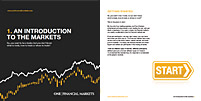

Oil prices dip amid Fed fears, rate hike jitters
Investing.com -- Oil prices fell on Monday as investors locked in some profits after strong gains in the prior week, while strength in the dollar, before a closely-watched Federal Reserve meeting, also weighed.
The prospect of tighter supplies put prices close to their highest levels in nearly three months, as production cuts by Saudi Arabia and Russia began to be felt by markets.
Signs of steady U.S. crude demand, coupled with bets on more stimulus measures in major importer China also buoyed oil over the past four weeks.
But this trend was somewhat offset by anticipation of a two-day Fed meeting, starting Tuesday. The central bank is widely expected to raise interest rates by 25 basis points.
Brent oil futures fell 0.5% to $80.48 a barrel, while West Texas Intermediate crude futures fell 0.5% to $76.67 a barrel by 21:06 ET (01:06 GMT). Both contracts were sitting on four straight weeks of gains, which were triggered by major producers signaling tighter oil markets for the remainder of the year.
Fed headlines central bank-heavy week
The U.S. central bank is widely expected to raise interest rates by 25 basis points at the conclusion of a two-day meeting on Wednesday.
But markets remained on edge over whether the central bank will announce an end to its nearly 16-month-long rate hike cycle.
Fed Fund futures prices show that traders expect this week’s hike to be the Fed’s last, with U.S. interest rates set to remain at 5.5% for the remainder of the year.
Any indications of more hikes are likely to pressure oil markets, given that markets fear economic conditions will worsen this year amid higher interest rates.
The dollar firmed on expectations of a hike this week, which also pressured oil prices and other commodities priced in the greenback.
Beyond the Fed, focus this week is also on the European Central Bank (ECB) and the Bank of Japan. The ECB is also widely expected to hike interest rates by 25 basis points on Thursday, although the European bank recently signaled that an end to its rate hike cycle is close.
Tighter monetary policies pressure economic activity, in turn hurting oil demand. This notion pressured oil prices over the past year.
China stimulus in focus
Oil markets are also awaiting any more measures from China, the world’s largest crude importer, to support economic growth.
Recent data showed that a Chinese economic recovery ran out of steam in the second quarter - a trend that is expected to attract more fiscal spending from Beijing.
The government has also vowed to support consumer spending, which could help fuel demand to recover from pandemic-era lows.
Begin trading today! Create an account by completing our form
Privacy Notice
At One Financial Markets we are committed to safeguarding your privacy.
Please see our Privacy Policy for details about what information is collected from you and why it is collected. We do not sell your information or use it other than as described in the Policy.
Please note that it is in our legitimate business interest to send you certain marketing emails from time to time. However, if you would prefer not to receive these you can opt-out by ticking the box below.
Alternatively, you can use the unsubscribe link at the bottom of the Demo account confirmation email or any subsequent emails we send.
By completing the form and downloading the platform you agree with the use of your personal information as detailed in the Policy.






